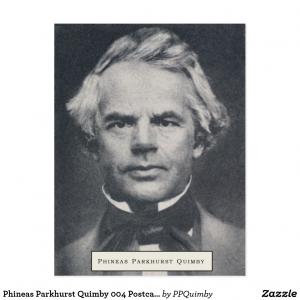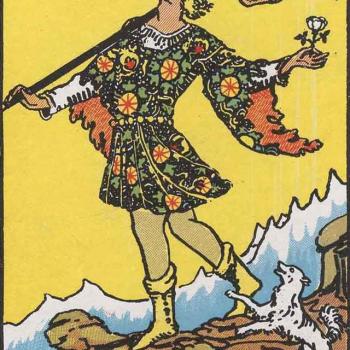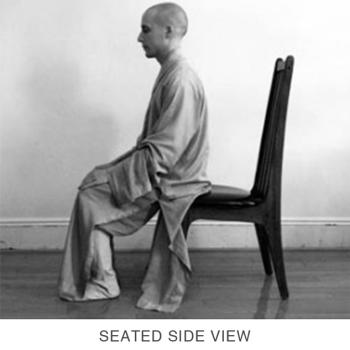In my view there are two great American original religions. One is the Church of Jesus Christ of Later-Day Saints, the Mormon religion. The other is New Thought. While people who write about New Thought give it a hundred mothers, I think we can actually start with Phineas Quimby.
Phineas Parkhurst Quimby was born on this day, the 16th of February 1802 in Lebanon, New Hampshire. His father was a blacksmith. He received negligible education before being apprenticed to a clockmaker. He was clearly brilliant, and eventually held several patents.
However, what makes him important to me and, well, to anyone interested in religious studies and particularly American religious studies started with his contracting tuberculosis. He quickly felt that medicine as it was available to him was woefully inadequate to his needs. He began to reflect on the nature of illness and cure.
Then on the ever popular lecture circuit Quimby began to learn about mesmerism. He was particularly interested in the lectures of the French mesmerist Charles Poyen and the writings of Robert H Collyer. Soon he began his own tour. The subject of his talks was simple. He began declaring that illness and health were intimately connected with one’s beliefs. And he began proscribing cures to what ails.
Quimby opened an office to practice his new psychosomatic medicine in Portland, Maine, in 1859.
Among those attracted to his theories and practices were Annetta and Julius Dresser and Mary Baker Eddy. After Quimby’s death Annetta and Julius began teaching the “Quimby System of Mental Treatment of Diseases” and Mary Baker Eddy began the Church of Christ, Science, the Christian Science movement.
The Dresser’s son Horatio, a Swedenborgian minister who would earn his doctorate at Harvard became the first historian of the movement that begins with Quimby. While he didn’t coin the term, he normalized it as New Thought. Dr Dresser would also provide a seven point summary of Phineas Quimby’s teachings:
1. The omnipresent Wisdom, the warm, loving Father of us all, Creator of all the universe, whose works are good, whose substance is an invisible reality.
2. The real man, whose life is eternal in the invisible kingdom of God, whose senses are spiritual and function independently of matter.
3. The visible world, which Dr. Quimby once characterized as “the shadow of Wisdom’s amusements”; that is, nature is only the outward projection or manifestation of an inward activity far more real and enduring.
4. Spiritual matter, or fine interpenetrating substance, directly responsive to thought and subconsciously embodying in the flesh the fears, beliefs, hopes, errors, and joys of the mind.
5. Disease is due to false reasoning in regard to sensations, which man unwittingly develops by impressing wrong thoughts and mental pictures upon the subconscious spiritual matter.
6. As disease is due to false reasoning, so health is due to knowledge of the truth. To remove disease permanently, it is necessary to know the cause, the error which led to it. “The explanation is the cure.”
7. To know the truth about life is therefore the sovereign remedy for all ills. This truth Jesus came to declare. Jesus knew how he cured and Dr. Quimby, without taking any credit to himself as a discoverer, believed that he understood and practiced the same great truth or science.
Writing from an outsider, although not unsympathetic perspective, William James noted in his Varieties of Religious Experience, which I found at Wikipedia explains New Thought:
“...for the sake of having a brief designation, I will give the title of the ‘Mind-cure movement.’ There are various sects of this ‘New Thought,’ to use another of the names by which it calls itself; but their agreements are so profound that their differences may be neglected for my present purpose, and I will treat the movement, without apology, as if it were a simple thing.
“It is an optimistic scheme of life, with both a speculative and a practical side. In its gradual development during the last quarter of a century, it has taken up into itself a number of contributory elements, and it must now be reckoned with as a genuine religious power. It has reached the stage, for example, when the demand for its literature is great enough for insincere stuff, mechanically produced for the market, to be to a certain extent supplied by publishers – a phenomenon never observed, I imagine, until a religion has got well past its earliest insecure beginnings.
“One of the doctrinal sources of Mind-cure is the four Gospels; another is Emersonianism or New England transcendentalism; another is Berkeleyan idealism; another is spiritism, with its messages of “law” and “progress” and “development”; another the optimistic popular science evolutionism of which I have recently spoken; and, finally, Hinduism has contributed a strain.
“But the most characteristic feature of the mind-cure movement is an inspiration much more direct. The leaders in this faith have had an intuitive belief in the all-saving power of healthy-minded attitudes as such, in the conquering efficacy of courage, hope, and trust, and a correlative contempt for doubt, fear, worry, and all nervously precautionary states of mind. Their belief has in a general way been corroborated by the practical experience of their disciples; and this experience forms to-day a mass imposing in amount.”
Personally I am fascinated with that Hindu thread. And, I have noticed on occasion New Thought teachers who more clearly wind that element into this unique American tradition. But, outside the scope of this small note.
All this said, while both Mormonism and New Thought, as I noted at the beginning, are genuine American religions, I think that through various forms including some “mainstreaming” through “positive thinking” and the “prosperity gospel,” it is New Thought that has become a current that has had the greatest influence.
And, for good or, probably and ill, it all begins with Mr Quimby…













